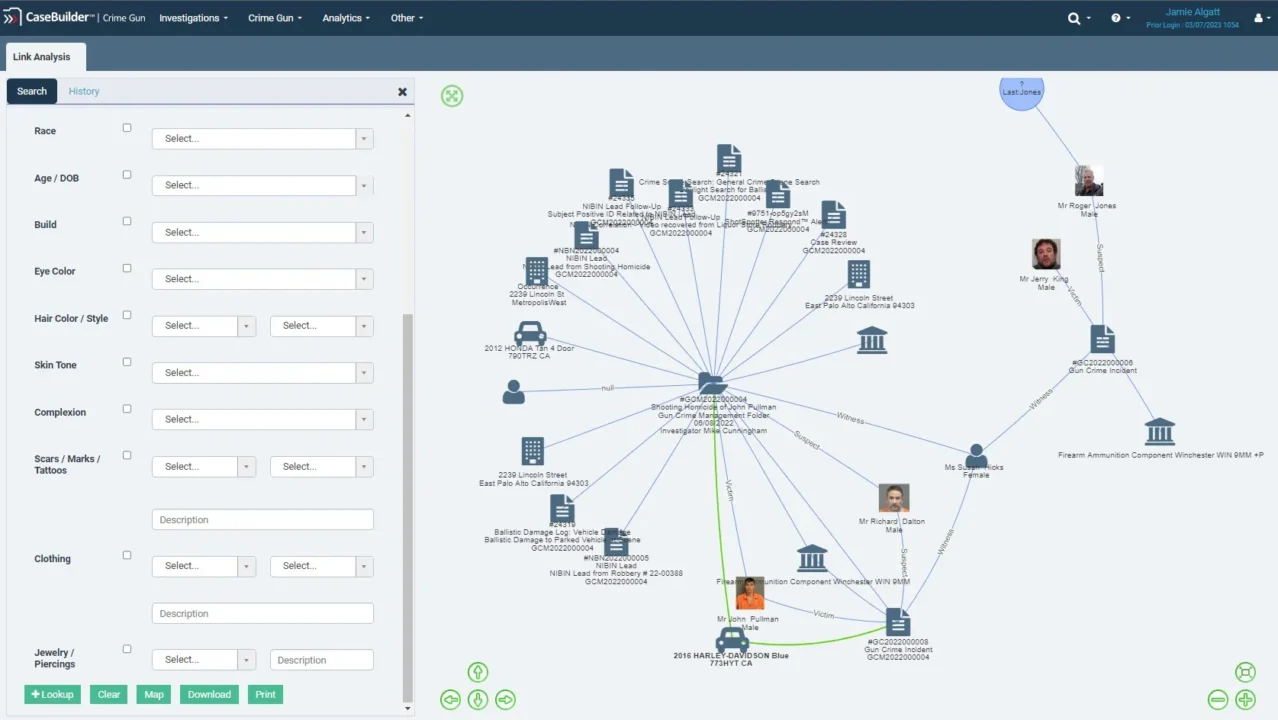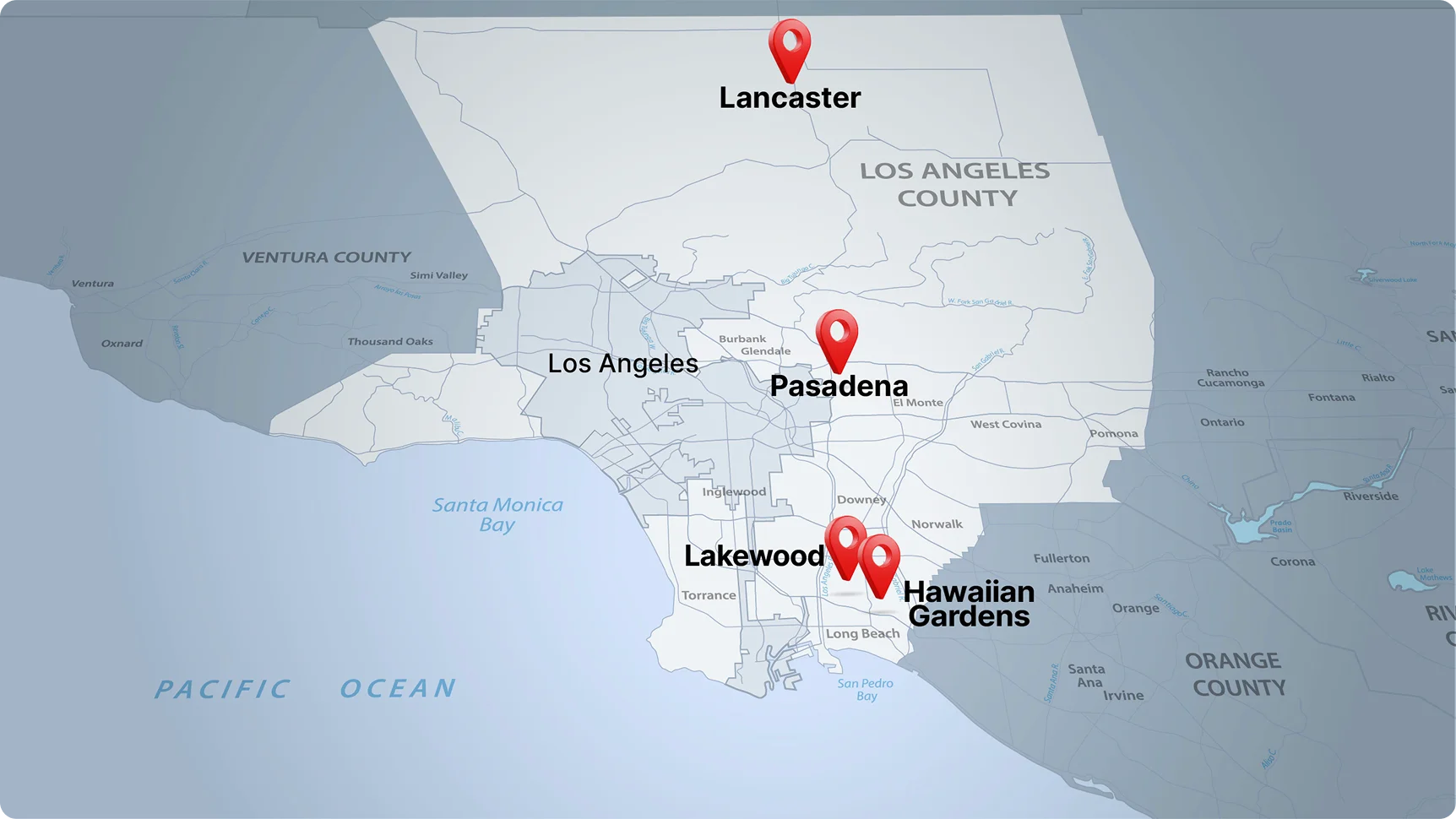Reported violent crime may be down nationwide since the pandemic, but gun crime investigations are more important than ever. According to the New York Times, “Americans are still shooting and killing one another more frequently than they did in the years before the coronavirus arrived.” According to the Gun Violence Archive, more than 20,000 people have been injured by gunfire in 2024 as of mid-August 2024, with over 10,000 people killed by gun violence (including unintentional deaths and defensive gun use). The latest Crime Victimization Survey shows a marked increase in non-reported crimes committed against citizens.
The Pareto Principle, more commonly known as the 80/20 rule, asserts that for cause-and-effect events, 80% of the effects come from 20% of the causes. Through years of research and advocacy, Community Violence Intervention (CVI) programs have found the Pareto Principle applies to CVI as the vast majority of gun violence incidents are perpetrated by a small population percentage.
Gathering evidence and building strong cases is crucial in gun violence prosecution. With the Pareto Principle in mind, prosecuting gun violence perpetrators can make a much more significant impact on gun violence intervention. Gun crime prevention is critical in many communities. And agencies know the importance of investigating violent crime. Understaffing and lacking other resources can slow criminal investigations. Technology, such as the ShotSpotter acoustic gunshot detection system and the CaseBuilder investigation management platform, supports law enforcement in gun crime prevention by helping find and gather evidence and building strong gun crime cases for prosecution.
Gun Crime Investigations
Gun crime investigations continue to be a priority for law enforcement agencies. Challenges abound, though, starting with the fact that less than 20% of gunfire incidents are reported to police in the first place. That’s compounded by the ongoing staffing shortages in law enforcement agencies and the outdated and awkward systems many agencies rely on for tracking incidents and managing their investigations.
The starting point for most gun crime investigations is identifying and tracking the guns used. Frequently, guns are not only used in one crime, so determining where the gun or guns come from and learning what other crimes they may have been used in provides leads to suspected perpetrators of current and past crimes, along with associated criminal networks.
NIBIN’s Role In Gun Crime Investigations
To this end, the DOJ’s Bureau of Justice Assistance (BJA) has established Crime Gun Intelligence Centers (CGICs), an interagency collaboration focused on collecting and managing crime gun evidence. A key part of the CGIC workflow involves the National Integrated Ballistic Information Network (NIBIN), established by the ATF in 1997. Using NIBIN, firearms examiners and technicians generate detailed images of shell casings, whether collected at the scene of an incident or created by test-firing a recovered crime gun. The images are saved in a database and automatically compared to existing images. Law enforcement agencies can also access the database to search firearm evidence against other gun crime evidence entered in NIBIN from many jurisdictions.

CGIC Work Flow (7-Step Process) sourced from https://crimegunintelcenters.org/cgic-concept/
The ATF describes an image match as an “unconfirmed, potential association between two or more pieces of firearm ballistic evidence.” The ATF also defines four steps that are critical to successful use of the NIBIN process:
- Comprehensive Collection and Entry: local law enforcement collects shell casings and submits them for imaging.
- Timely Turnaround: Technicians put the evidence into the network as quickly as possible to identify potential leads.
- Investigative Follow-Up and Prosecution: Investigators identify and apprehend shooters using discovered links between crimes.
- Feedback Loop: Law enforcement shares information about how the efforts have made the community safer.
Solutions to Help with Gun Crime Investigations
Modern law enforcement technology platforms can address all of these requirements. SoundThinking’s SafetySmart platform includes two products that make it easier to investigate gun crime while working in tandem to make the whole process more efficient. In this article, we’ll show how the ShotSpotter acoustic gunshot detection system and the CaseBuilder investigation management platform support law enforcement agencies in gun crime prevention and prosecution. CaseBuilder also provides the ability to capture critical Shooting Ground Truth details to better understand the impact and response by your agency.

CaseBuilder-Crime-Gun-NIBIN-Centralized-System
Looking to improve your ability to generate and follow up on NIBIN leads?
Gunshot Detection
ShotSpotter uses strategically placed acoustic sensors to detect and accurately locate gunshots. ShotSpotter captures the sound, and the Incident Review Center (IRC) receives the alert. Within 60 seconds, the alert is verified by a trained professional, who also adds context to the audio file. Police are notified of the incident in less than 60 seconds, given a precise location, and provided with information about the type of weapon used, how many shooters there were, and other data that enhances situational awareness. That enables them to arrive at the scene quickly to render assistance and also collect gun crime evidence. The system is in use by more than 170 cities across the country.
ShotSpotter provides substantial documentation around the evidence collected that can both aid in the investigation and assist in a later prosecution. ShotSpotter Forensic Services and Litigation Support delivers a report on the location, sequence, and timing of the rounds fired, a court-admissible analysis by forensic engineers and expert witness services. In one case, for example, ShotSpotter’s evidence of a pause in the shots fired was interpreted as the shooter reloading, which was used in court to demonstrate intent.
Investigation Management
CaseBuilder provides a secure cloud-based digital folder to track the progress of an investigation and hold collected evidence, including scene descriptions and photos, witness statements and tips, officer reports, and, in the case of gun crimes, NIBIN results and leads. Based on the ballistic evidence in the NIBIN database, CaseBuilder enables investigators to identify other cases associated with the same gun immediately.

CaseBuilder-Drive-Operational-Insights
CaseBuilder aids in addressing gun crime in several ways:
- collecting basic ground truth information about shootings,
- scanning a NIBIN Lead report and associating the information back into the case folder,
- sharing gun crime trends and statistics to meet BJA reporting requirements and
- revealing how an incident relates to known individuals, addresses, and vehicles through link analysis tools.
Stronger Together
The ways in which ShotSpotter and CaseBuilder are integrated make them even more powerful and useful. First, a case folder can be automatically created from a ShotSpotter gunshot detection alert.
The easy import of NIBIN leads also maximizes efficiency. Many agencies try to manage the leads in an RMS or using spreadsheets, but such awkward solutions make it difficult to connect evidence. In CaseBuilder, by contrast, they are all in one searchable folder.

CaseBuilder-Crime-Gun-NIBIN-Lead-Import
The CaseBuilder solution has prioritization and management tools to help command staff and investigators determine which leads should be followed up and allocate resources accordingly. That can both improve clearance rates and reduce staff burnout.
CaseBuilder also integrates with another SafetySmart component, CrimeTracer. CrimeTracer is a law-enforcement-oriented search engine that lets officers and investigators use natural language search to find associations and matches across multiple jurisdictions. Gun crime evidence or relationships uncovered in CrimeTracer can be easily added to a CaseBuilder folder, and evidence in CaseBuilder can be easily used to generate a search in CrimeTracer. That lets investigators share NIBIN leads and other evidence across multiple jurisdictions, as well as access such evidence from other places.

CaseBuilder-Crime-Gun-Associate-Crimes
Conclusion
Using ShotSpotter and CaseBuilder together fulfills the ATF’s suggestions for successfully preventing and prosecuting gun crimes, whether you’re relying on the NIBIN system or other leads you might uncover. To review their recommendation:
- Comprehensive Collection and Entry: ShotSpotter puts officers on the scene quickly and in the right place, with the situational awareness needed to protect themselves. Fast responses save lives, and ShotSpotter alerts get officers to the scene quickly to aid gunshot victims – especially for those where the gunshots were not called into 9-1-1. ShotSpotter alerts also make it more likely they will recover shell casings and other physical evidence.
- Timely Turnaround: A ShotSpotter alert can quickly generate a CaseBuilder folder to hold the evidence collected on-site and whatever is collected later.
- Investigative Follow-Up and Prosecution: CaseBuilder’s link analysis (plus CrimeTracer’s search capabilities) helps uncover associations between NIBIN leads. Finding links between gun crimes helps investigators identify and apprehend shooters. Once an arrest has been made, CaseBuilder can package up the supporting evidence, including ShotSpotter forensic analysis, to pass off to prosecutors.
- Feedback Loop: CaseBuilder’s ability to review the status of cases and their disposition in court gives command staff a basis for informing the community about the success of its efforts to stop gun crime.
Gun crime continues to be a problem in the US, but programs like NIBIN have proven successful in finding perpetrators and saving lives. Working together, ShotSpotter and CaseBuilder support best practices for getting the most out of NIBIN leads and other crime gun evidence.
Tackling gun violence across jurisdictional boundaries can also be tricky. Leveraging intelligence sources like ShotSpotter, NIBIN, CaseBuilder, CrimeTracer, eTrace, and social media while collaborating with multiple jurisdictions is no small feat. Watch our on-demand webinar from a cross-jurisdictional collaboration workshop on Mastering Intelligence-Led Strategies to Combat Gun Crime.
The first step to investigating gun crime through integrated solutions is to know which tools provide the most benefit. Integrating ShotSpotter and CaseBuilder can provide your agency with the tools for addressing gun crime. Our gunshot detection and case management tools help you achieve more effective policing and improved clearance rates as you work toward improving officer safety and protecting the community. To see how ShotSpotter and CaseBuilder can help your agency address gun crime, schedule a meeting to learn more.





